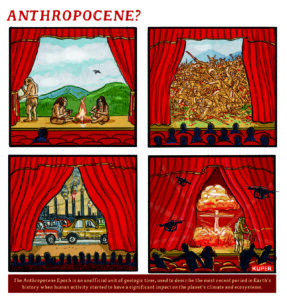The Climate Issue Hiding in All Our Homes
Common household products could be adding to the problems of climate change in unexpected ways. Michi Pie / CC BY-NC-ND 2.0
Michi Pie / CC BY-NC-ND 2.0
The household tissue you use to blow your nose could be adding to the problems of climate change.
A substantial portion of the tissue products we buy – toilet paper, paper towels and facial tissues – comes from boreal forests, the dense ring of trees which encircles much of the globe just below the Arctic Circle.
These forests – and the soils they stand in – contain vast amounts of carbon; when trees are felled and the land they are growing in is disturbed, carbon is released into the atmosphere, adding to the already dangerously high levels of climate-changing greenhouse gases.
A new report looking at tissue use in the US says Americans are voracious consumers of tissue products; they make up only 4% of the world’s population yet account for more than 20% of global tissue consumption.
The report, by the US-based environmental organisation, the Natural Resources Defense Council (NRDC), says much of the tissue in the US originates from trees in Canada’s boreal forests.
“The consequences for indigenous peoples, treasured wildlife and the global climate are devastating”
“This vast landscape of coniferous, birch and aspen trees contains some of the last of the world’s remaining intact forests, and is home to over 600 indigenous communities, as well as boreal caribou, pine marten and billions of songbirds”, says the NRDC.
It says that when boreal forests are degraded, their ability to absorb man-made greehouse gas emissions declines.
“In addition, the carbon that had been safely stored in the forests’ soil and vegetation is released into the atmosphere, dramatically undermining international efforts to reduce greenhouse gas emissions.”
Temperature increases in the world’s northern regions are already having an adverse impact on boreal forests.
Scientists say earthworms which have recently been found burrowing into the boreal undergrowth are another problem threatening the forests’ survival.
The report says logging on an industrial scale destroys more than a million acres of boreal forest each year. It says what amounts to a “tree to toilet” pipeline has been established, with trees chopped down and converted into tissue pulp, then rolled into perforated sheets or stuffed into boxes and flushed or thrown away.
Solutions available
“The consequences for indigenous peoples, treasured wildlife and the global climate are devastating”, says the NRDC. It insists there are solutions to the problem; sustainably sourced, alternative fibres such as wheat straw and bamboo are available which would greatly reduce the amount of trees being felled.
The report says some US manufacturers have made efforts to use more sustainable materials in their products, but the biggest in the sector – Procter & Gamble, Kimberly-Clark and Georgia-Pacific − still rely on virgin pulp from boreal forests for almost all their tissue brands.
“The companies with the largest market shares have the power to make a significant difference for the future of our world’s forests”, says the NRDC.
“Instead, they largely adhere to decades-old tissue formulae that have taken a devastating toll on forests.”
The report calls on consumers to change their buying habits and purchase only brands derived from sustainable products.“Forests are too vital to flush away”, says the NRDC.
Your support matters…Independent journalism is under threat and overshadowed by heavily funded mainstream media.
You can help level the playing field. Become a member.
Your tax-deductible contribution keeps us digging beneath the headlines to give you thought-provoking, investigative reporting and analysis that unearths what's really happening- without compromise.
Give today to support our courageous, independent journalists.






You need to be a supporter to comment.
There are currently no responses to this article.
Be the first to respond.